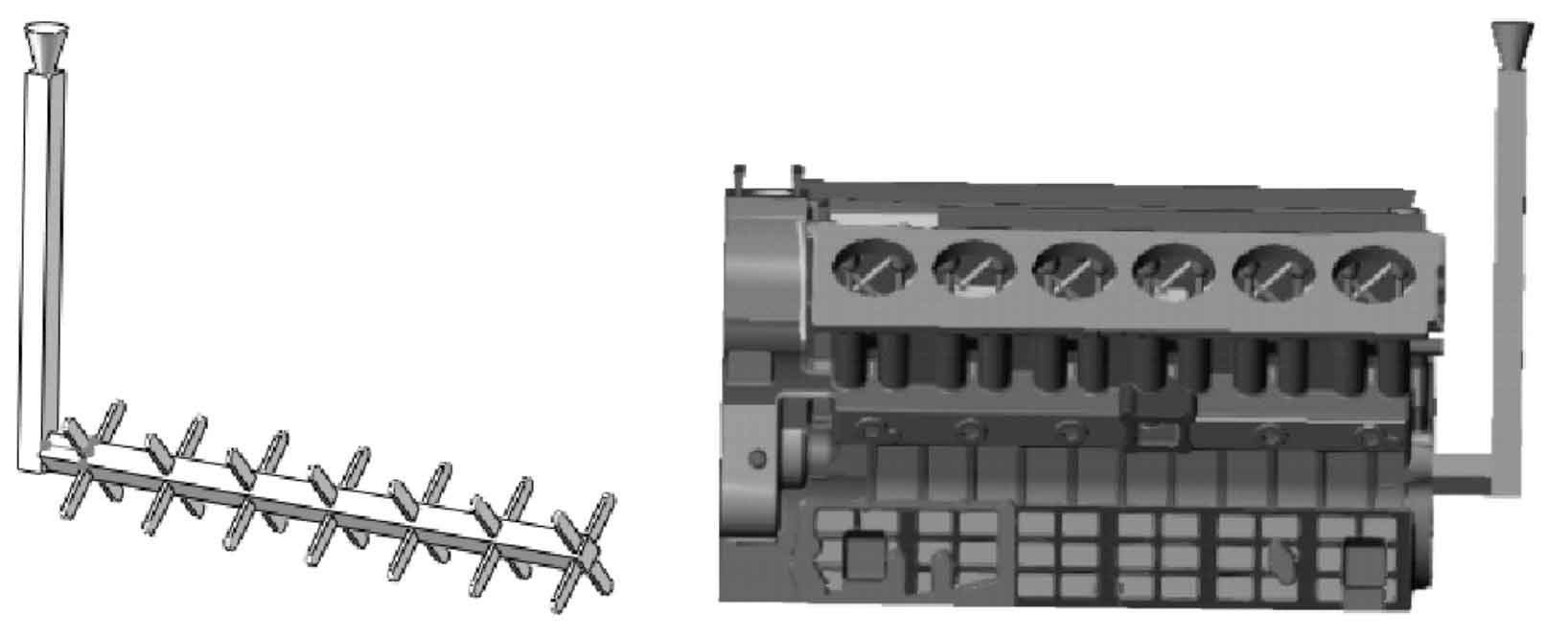1. Structural analysis of cylinder block
The schematic diagram of a 12 cylinder block is shown in Figure 1. The outline dimension of lost foam casting cylinder block is 1225mm × 800mm × 680mm, casting volume of 0.666m3, mass of lost foam casting cylinder block of 638.2kg, thickness of the thinnest wall of 9mm, boss and curved surface on the parts, large cavity and complex internal structure. The parts are required to be dense and uniform, without shrinkage and shrinkage defects, and there is no leakage in the water channel, air channel and oil channel in the cylinder.
2. Casting process and simulation parameters
The original process scheme adopts the intermediate injection gating system, and the size of the sprue is 50mm × 50 mm × 730mm, runner size 50mm × 50mm × 1150mm, one box and one piece. Waste slag will be produced during pouring, which will affect the quality of lost foam casting cylinder block. In the original process, a slag collecting riser is set at the top of the lost foam casting cylinder block to facilitate slag collection and slag discharge of the lost foam casting cylinder block, as shown in Fig. 2 and Fig. 3.
The material of the lost foam casting cylinder is HT250, and the foam material is EPS. The pouring temperature is 1540 ℃, the pouring time is 80s, the negative pressure is – 0.06mpa, and the size of the sand box is 1500mm × 1000mm × 1300mm, the sand intake is 200mm at the bottom, 100mm at the front and rear, and 150mm at the left and right. The sand mold material is 40 ~ 70 mesh dry quartz sand. The main material of the coating is quartz powder, the thickness is 1.5mm, the heat transfer coefficient between foam and sand mold is 100W / (m2. K), the heat transfer coefficient between the lost foam casting and the sand mold is 500W/ (M2 K), and the mold temperature is 25 degree C.



